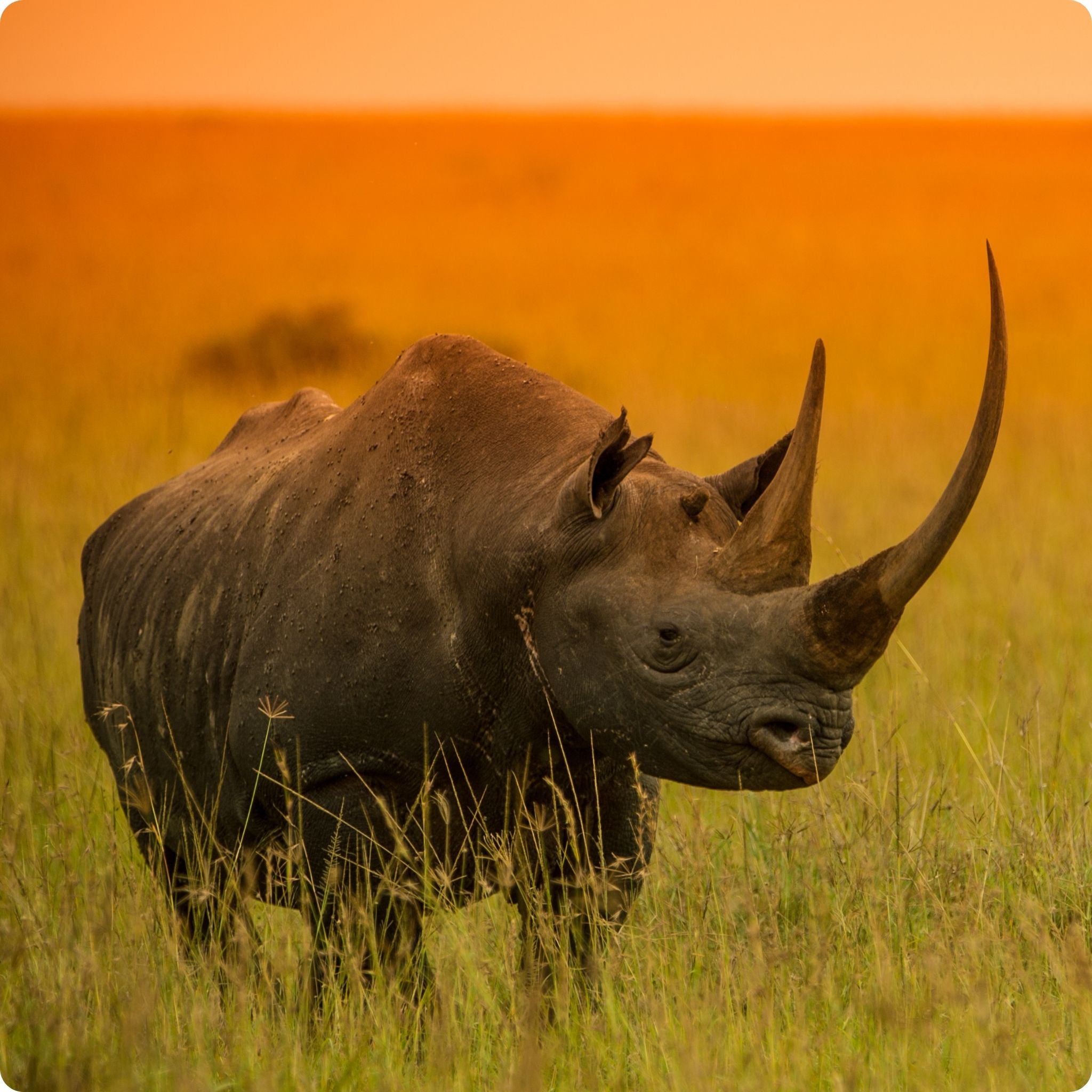
Black Rhino
This is the place to learn all about the mighty black rhino, wow your friends with some fascinating facts, learn about what sets them apart, where black rhinos live, how they spend their day and what they eat. Read about what makes black rhinos so important and why their future is being threatened.
What sets black rhinos apart?
There are five rhinoceros species that live in either Africa or Asia. The two species in Africa are the white rhinoceros and the black rhinoceros.
Black rhinos are the smaller of the two African rhino species and despite their name, both black and white rhinos are actually grey. The most notable difference between white and black rhinos are their hooked upper lip, compared to the white rhinos’ square lip. Black rhinos also have a smaller head.
Black rhinos have two horns, which grow throughout their life. The front horn is longer than the rear horn and can grow to around 50 cm long. Male rhinos tend to have thicker horns, whereas the females often have longer and thinner ones. Their horns are not like those of other horned animals, but is made of a substance called keratin which is similar to hair and fingernail fibres; it is extremely tough, but can be broken or split during fighting.


Where do black rhinos live?
Black rhinos can be found throughout southern and eastern Africa, including Kenya, Tanzania, Namibia, South Africa and Zimbabwe.
How do black rhinos spend their day?
Black rhinos tend to be solitary, meaning that they live alone, yet they may be quite territorial and aggressive. However, depending on their habitat some may be semi-social and less aggressive.
Black rhinos can be active during both the day and night, but tend to rest during the hottest part of the day. At this time they will usually find some shade under trees, large rocks or wallow in the mud.
Black rhinos can often be seen with birds, called red and yellow-billed ox-peckers on their back. They spend the day removing ticks and clearing parasites, but also by raising the alarm if there is any danger approaching.
The most common noises made by rhinos are sniffing and snorting sounds, particularly when they are disturbed. They may also grunt as a way of communicating amongst themselves.
Scent-marking is the most important method of communication for rhinos. Urine spraying is a common form of scent-marking as well as dung, or poo piles, known as ‘middens’. Black rhinos may also leave their smell against a rock or tree by rubbing their head to mark out their territory.
The gestation period, or pregnancy, of a rhino is 15 to 16 months and female rhinos will have just one baby or ‘calf’ at a time. Rhino calves can weigh between 30 and 45 kilograms and can usually stand within the first few hours after being born. Black rhino calves stay with their mother for up to 4 years.


What do black rhinos eat?
Black rhinos are browsers rather than grazers and their pointed lip helps them feed on leaves from bushes and trees. The rhinoceros is a herbivore, meaning that they will only eat plants and leaves.
Why are black rhinos so important?
Rhinos have been around for millions of years and are one of the oldest groups of mammals. They play an important role in their habitats, helping to maintain the ecosystem they live in, and to shape the landscape. This in turn benefits other animals.
Rhinos are an important source of income from ecotourism, as one of Africa’s ‘big five’, rhinos are a popular sight for tourists.





